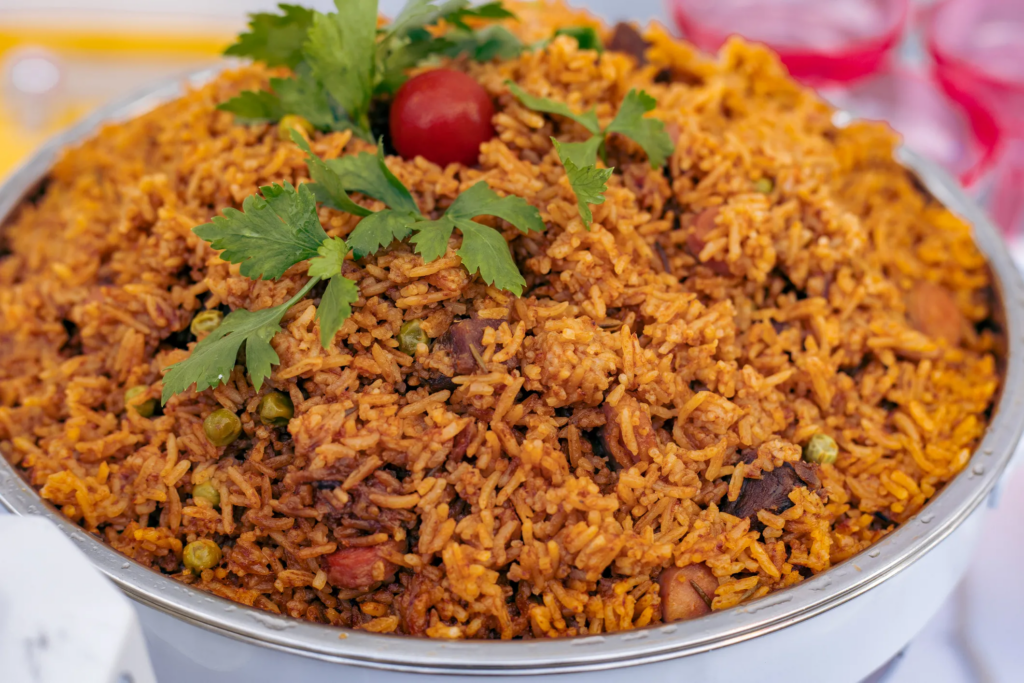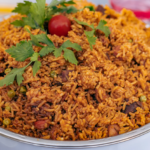
I was born and raised in New York City, but my oldest memory is from Ghana. I was young, no older than four, and living with my grandparents. Their house was nestled on a long road in South Patasi, Kumasi that led to a cluster of food vendors and local shops. I remember how it felt to race down the driveway, body careening forward and wobbling from speed.
At the bottom, I knew what was waiting for me: coco-yam leaf stew, roasted plantains, or perhaps even bofrot—hot, delicious balls of fried dough, my absolute favourite. There is still a running (pun-intended) joke in my family, about that four-year-old kid yelling “bofrot” at the top of his lungs whenever a vendor passed by.
My parents immigrated from Ghana to the Bronx in the late 1980’s. Soon after, I crashed the party, the first member of our family to be born stateside. This introduced a new duality to what my parents considered to be a traditional West African home: As I grew, my words came out dripping with an east coast cadence while my mother and father held onto their warm, Twi timbre. Our vernacular was the first striking difference I noticed between us. You could hear how our roots crisscrossed the Atlantic.
As a child in the Bronx, I was surrounded by other first-generation kids. We were Albanian, Puerto Rican, Jewish, Italian, West African, Caribbean—you name it. We didn’t know it then, but we were living in a hotbed of culinary excellence. I could walk down the street and find everything from roti and pastrami on rye, to vatapá, a thick Brazilian shrimp stew. We’d point to this now and call it “diverse,” but my friends and I, we weren’t thinking in such terms. The idea of belonging elsewhere, of being from somewhere else, just was.
Until, of course, it wasn’t.
In grade school, I spent a lot of time plopped in front of the television, falling in love with American food programming. Julia Child or Martin Yan stirred and whisked on the screen before me, and I noticed how different their kitchens were from my own. Where was the jollof, the fufu? The oxtails and the goat? My mother’s staples were nowhere to be found on PBS.
As I edged closer to adolescence, these differences began to stack up. The farther I went from home, the more I saw what separated my family from others. The music and food, the ways of speaking—people knew immediately not only by my face and skin colour and the kink in my hair but how the smell of my mother’s kitchen carried on my clothes. I became more aware of how it felt to be in certain spaces. How the ways in which I could feel myself being perceived changed depending on who was doing the perceiving.
These days, mainstream American culture seems to be reconsidering how it views Africa, particularly when it comes to the complexity and diversity of our food. There certainly remains a lot of room for growth, nuance, and education, however, the general awareness of the continent’s beauty and bounty is building. This wasn’t the case when I was growing up.

Macro and micro-aggressions, ignorant comments, and uncomfortable lines of questioning came from both ends of my cultural spectrum. Friends, acquaintances, and strangers who were unfamiliar with Ghanaian and West African culture at large (or what it means to be first generation, for that matter) made up one end, while some of my own aunties and uncles made up the other. Family members poked fun at my American accent. I became an expert at dodging comments about being “too westernised.” All of this left me in a weird, liminal place, balancing two cultures that, by birth, I belonged to but, culturally, didn’t always feel tribal with. Westerners saw me as African, and Africans questioned how African I was once they heard my American accent.
This push to claim some sort of allegiance to one place over another reappeared, particularly, in culinary school. There, the global tapestry of food in the Bronx was swapped for something much more Eurocentric. From the infamous brigade system to the “five mother sauces,” the curriculum was steeped in French ideology. While I was happy to learn and master new techniques, something old and strong rallied within me.
Bechamel is beautiful, but there are mother sauces in Asia, South America, in Africa—all over the world. Culinary school taught me many things, but perhaps the most important was that to make food that really represented me and all that I’d come from, I would have to actively decide to embrace every part of who I am: Ghanaian, American, Chef, even being a Long-Suffering Knicks Fan.
As a chef, I have learned to let my history lead me. I tell my story through the vehicle of food, but I’m confident that if I had become a painter, a photographer, an actor, or a basket weaver, my Ghanaian roots would have shown through either way.
I believe that we all come from divine placement, and when you’re able to weave your whole history and heritage into your craft, that’s where the magic happens, that’s how you set yourself apart in a crowded field. The mother sauce is made when you stir your culture into your craft.
When you barrel unapologetically towards your truth like a boy running after bofrot.
******
Adjepong is a celebrity chef, Food Network television host, and author. He recently released his first children’s book, Sankofa: A Culinary Story of Resilience and Belonging, in fall of 2023



